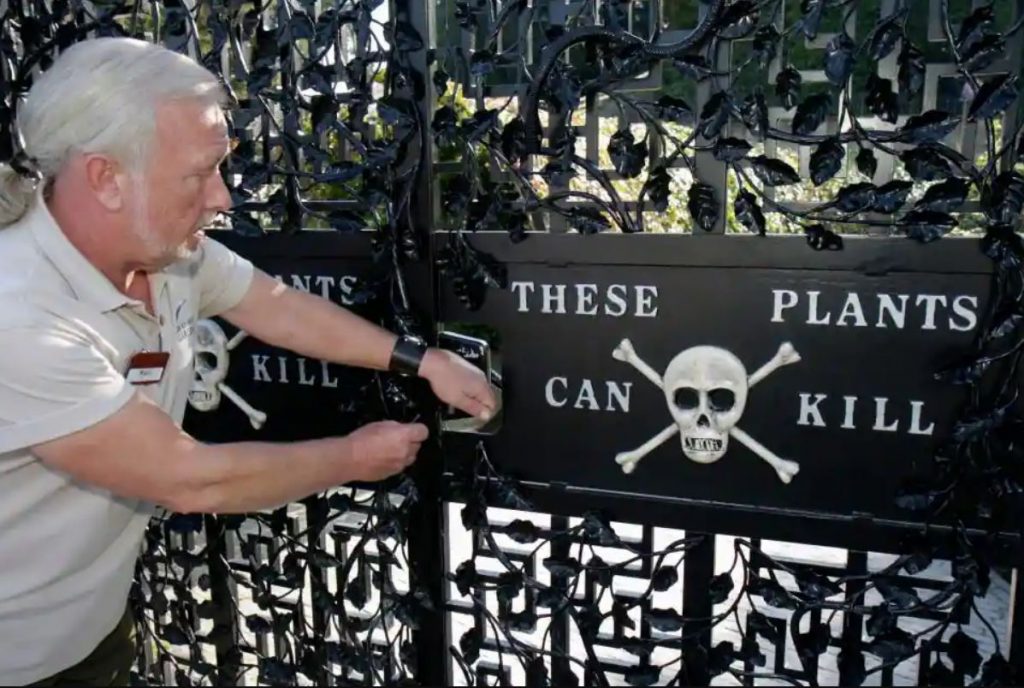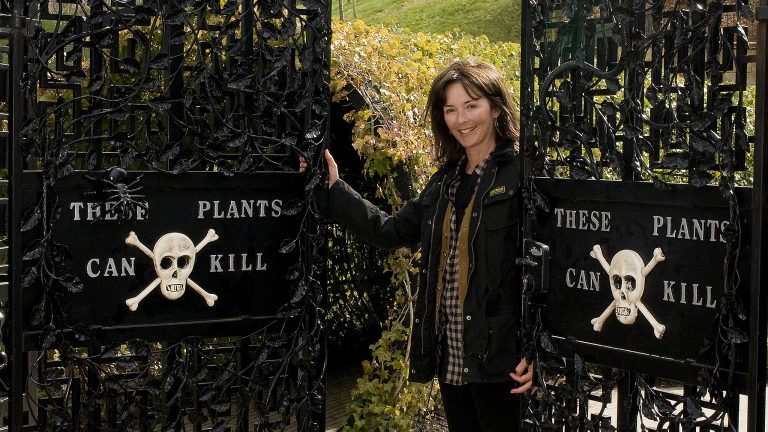A garden in northern England has plants that are so dangerous that it is only accessible to the public on guided tours and where it is forbidden for visitors to smell, touch, or taste any of the vegetation.
Around 100 “toxic, intoxicating, and narcotic plants”—from deadly nightshade and hemlock to strychnine and enormous hogweed—can be found in Alnwick, Northumberland’s Poison Garden.
Take a look.

More than 100 hazardous plants are locked up at the Poison Garden. Some are grown in cages because they are so dangerous. You most definitely don’t want to stop in this garden to take a moment to smell the flowers. This macabre collection was produced by the Duchess of Northumberland to aid in educating pupils about the hazards of hazardous and illegal substances, specifically the kinds of compounds these plants produce. It is forbidden for garden visitors to touch, smell, or even stand close to the plants.
Black Henbane

Black henbane (Hyoscyamus niger), which has pale yellow flowers with black veins and a dark centre, is also known as devil’s eyes. This herb’s leaves give off a foul smell that can be overpowering, particularly on a warm day in the walled Poison Garden. Because visitors commonly pass out or even faint when they are close to this plant, there is a bench there as well as first responders on duty. Henbane was a key component of herbal therapy in the old world, thus settlers brought seeds with them to the New World. The Northeast, Midwest, and West now all contain the plant. This plant is harmful to humans and animals in all sections.
Giant hogweed

Heracleum mantegazzianum, often known as giant hogweed, is one of the most dangerous plants. Larger than Jack’s beanstalk and with blossoms that resemble tiny queen Anne’s lace, huge hogweed is difficult to miss. Plants stand 8 to 14 feet tall, an astounding height that makes it hard to resist posing beneath. Don’t approach this enormous threat right away, though. Its flammable sap has the ability to burn your flesh, resulting in third-degree burn blisters that can last up to seven years. This toxic plant is even more dangerous than breaking a mirror! The sap can cause blindness if it gets in your eyes. In the Northeast, Midwest, and Pacific Northwest, reports of giant hogweed are widespread.
Angel’s Trumpet

Fragrant blossoms cover up this exotic beauty’s dangerous nature. Brugmansia, usually referred to as angel’s trumpet, is a common container plant that is frequently grown as an annual in areas with harsh winters. Gardeners often grow it as a tree in the warmest regions, letting the long, trumpet-shaped blooms dangle. A strong hallucinogen related to LSD is angel’s trumpet. Victorian women would maintain a plant inside the house and sprinkle some pollen into a teapot to transform the warm beverage into a dainty sip for lady guests. The plant is poisonous in every aspect.
Cherry Laurel

A favourite hedge plant on both sides of the Atlantic can be found in the Alnwick Poison Garden: cherry laurel (Prunus laurocerasus). This aromatic evergreen emits cyanide when stems or leaves are broken. Laurel leaves were important components of Victorian butterfly collections. A butterfly that has been poisoned with cyanide is ready for mounting after being placed in a jar with a cherry laurel leaf that has been clipped. When transporting laurel hedge trimmings to the yard garbage drop, enthusiastic British gardeners occasionally report experiencing headaches and lightheadedness as a result of cyanide poisoning. The clippings have been sitting in the car with the windows open, allowing cyanide to build up, when this incident usually happens on a warm day. “Otto Luyken” is a widely grown cultivar in the United States.
Lenten Rose

Lenten rose (Helleborus), often known as hellebore or Christmas rose, is distinguished by its early season flowers. Flowers emerge from late winter to early spring, with leathery evergreen leaves and nodding blooms glistening in the wintertime. Flowers open in a range of colours, including white, pink, burgundy, and almost-black (like the Dark and Handsome variety seen here). The plant is deadly throughout, but the roots have the highest quantities of toxic substances that cause vomiting and can even be fatal. (WION)




